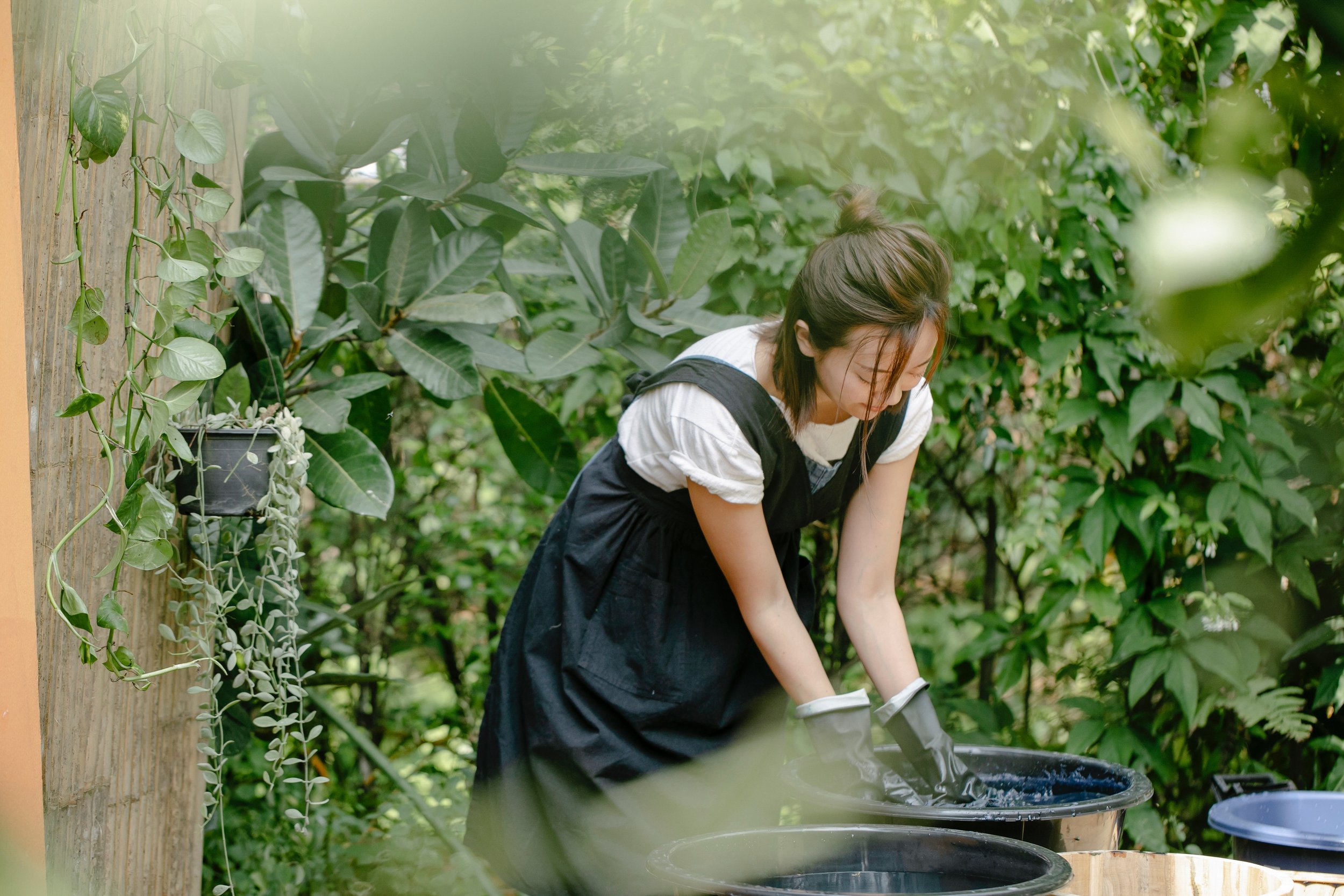Have you ever considered the effect you’re making on the environment with the clothes you wear? The fashion industry has been identified as one of the leading factors contributing to pollution in modern society. Fortunately, awareness of the problem is on the rise, and at the moment, there is a transition to natural alternatives.
There is an additional choice to dye the clothing with herbal options. These sustainable herbal dyes on clothes assist people in reducing pollution, hence enabling people to have healthy lives.
Speaking of herbal dyes, let us discuss why fashion enthusiasts who are mindful of environmental concerns are increasingly choosing to use them as their preferred dye.
The Problem with Conventional Dyes
Dye is one of the most neglected aspects regarding the impact of the fashion industry on the environment. Conventional synthetic dyes used in most mass-produced apparel are very detrimental to the environment and lead to pollution.
These chemical-based colors pollute water bodies, kill fish and other water creatures, and may also pose a threat to human life. They are made of dangerous substances that pollute the ground through the process of infiltration into the water sources. Not only that but using clothes that are made of cotton and dyed with synthetic material is very dangerous to our skin since it may cause skin rashes and allergies.
Now, let’s look at a better way to introduce color into the wardrobe, one that embraces environmental conservation and health concerns. The natural alternative is herbal dye. These pigments have been used for centuries and are getting a new lease of life in the current green clothing movement.
What Are Herbal Dyes?
Herbal dyes are derived from plants, flowers, leaves, and even roots. As such, these dyes do not contain any harmful chemicals, hence making them very safe for the environment. They have been used by various cultures for centuries to dye textiles but are now emerging strongly as a sustainable fashion.
The process of creating herbal dyes is fascinating. Artisans extract the colors from natural sources like turmeric, indigo, pomegranate, or henna. Each plant provides its unique color-making, thus resulting in vibrant earthy tones that give clothing a distinctive and organic look. Though once regarded as past relics, herbal dyestuffs are currently leading among fashionable clothing patterns primarily made using organic cotton fabrics.
Why Choose Herbal Dyes for Cotton Apparel?
- Eco-Friendly and Non-Toxic
In contrast to artificial colors, natural tints are devoid of dangerous compounds, which makes them less hazardous for both the individual and the surroundings. Thus conserving the environment and reducing carbon footprints within the fashion sector. By wearing these garments, one can contribute to environmental protection. - Biodegradable
Unlike synthetic dyes, which can remain in the environment for years, herbal colors are biodegradable. This indicates that the clothing will naturally decompose after being thrown away and won’t leave any toxins behind. It’s a modest but significant step in the right direction to lessen the quantity of garbage that ends up in landfills. - Gentle on the Skin
Herbal dyes are milder on the skin because they are made from natural formulas. It is important to note that because they are hypoallergenic, people with skin-related conditions like allergies are not harmed by them. Rather than being dyed with harsh chemicals that could cause skin rashes, organic cotton clothing dyed naturally with herbal extracts leaves one feeling comfortable and guilt-free. - Unique and Authentic Colors
Among the most attractive reasons for using herbal dyes is that they bring out a more concentrated, authentic color. Whether deep blues from indigo or warm yellows from turmeric, each color brings out a different hue. These dyes have softer, heavier tones, adding a semblance of authenticity and character to the garments. - Supports Traditional Craftsmanship
Many small communities worldwide depend on these traditional techniques of dyeing for an income source. Therefore, using herbal dyes to dye cotton garments will support sustainable fashion while also helping to preserve the customs and age-old craftsmanship. It is one way to contribute to the cultural heritage of these artisans by upholding these old skills that should not be vanishing.
How Herbal Dyes Fit into Sustainable Fashion?
More than merely cutting waste, sustainable fashion aims to establish a system that prioritizes durability, quality, and environmental responsibility. Herbal coloring is a fantastic fit for this movement. They make it possible to wear apparel that not only looks stunning but also shows a dedication to sustainability.
The use of sustainable dyes on clothes signifies a departure from the destructive methods of rapid fashion. Consumers are now searching for carefully handmade apparel instead of mass-produced, inexpensively constructed items. The emphasis is on quality over quantity, and clothing colored with herbs is a great example of this. These garments represent an investment in the future of the world, not just a purchase.
Transitioning to a Sustainable Wardrobe
If you are planning to incorporate more environmentally friendly clothes in your wardrobe, then cotton apparel colored with herbal colors would be a good option. Here are a few tips to help you transition to a more sustainable wardrobe:
- Start Small: You do not have to make drastic changes to the wardrobe all at once. It is wise to start with a few items that are made with natural dyes. It’s better to look for things such as T-shirts, dresses, or scarves that can be put on with the other clothes you already have.
- Do Your Research: Many brands market their products using the ‘green’ phenomenon, but they are not all green. It is also important to understand that you need to look for brands whose products are made using real herbal dyes and are also environmentally friendly.
- Look for Certifications: It is possible to find logos and labels that point to the fact that some brands are committed to sustainability. Products should be labeled using certain certifications, such as GOTS (Global Organic Textile Standard) or OEKO-TEX, which assure that they are safe for the environment and made without exploiting the workers.
- Care for Your Clothes: Sustainable fashion, on the other hand, involves not only buying clothes but also taking care of them in the right manner. To maximize the lifespan of your herbal-dyed apparel, wash and care for them correctly as instructed.
The Future of Sustainable Fashion
Sustainable fashion will continue to rise as more people become conscious of the environmental consequences of their purchases. One way the cotton industry can go green is by using sustainable herbal dyes on clothes made from the same fabric.
It is inspiring to see how companies are adapting and looking for ways to combine this brand-making concept with quality and sustainable production. Finally, wearing herbal-dyed cotton apparel is not simply a question of style but of the ethics of the products that people wear. By being more conscious of our decisions, we can all help to create a greener world, one step at a time.
Read Next: Chemical vs. Natural Dyes for Grey Hair




